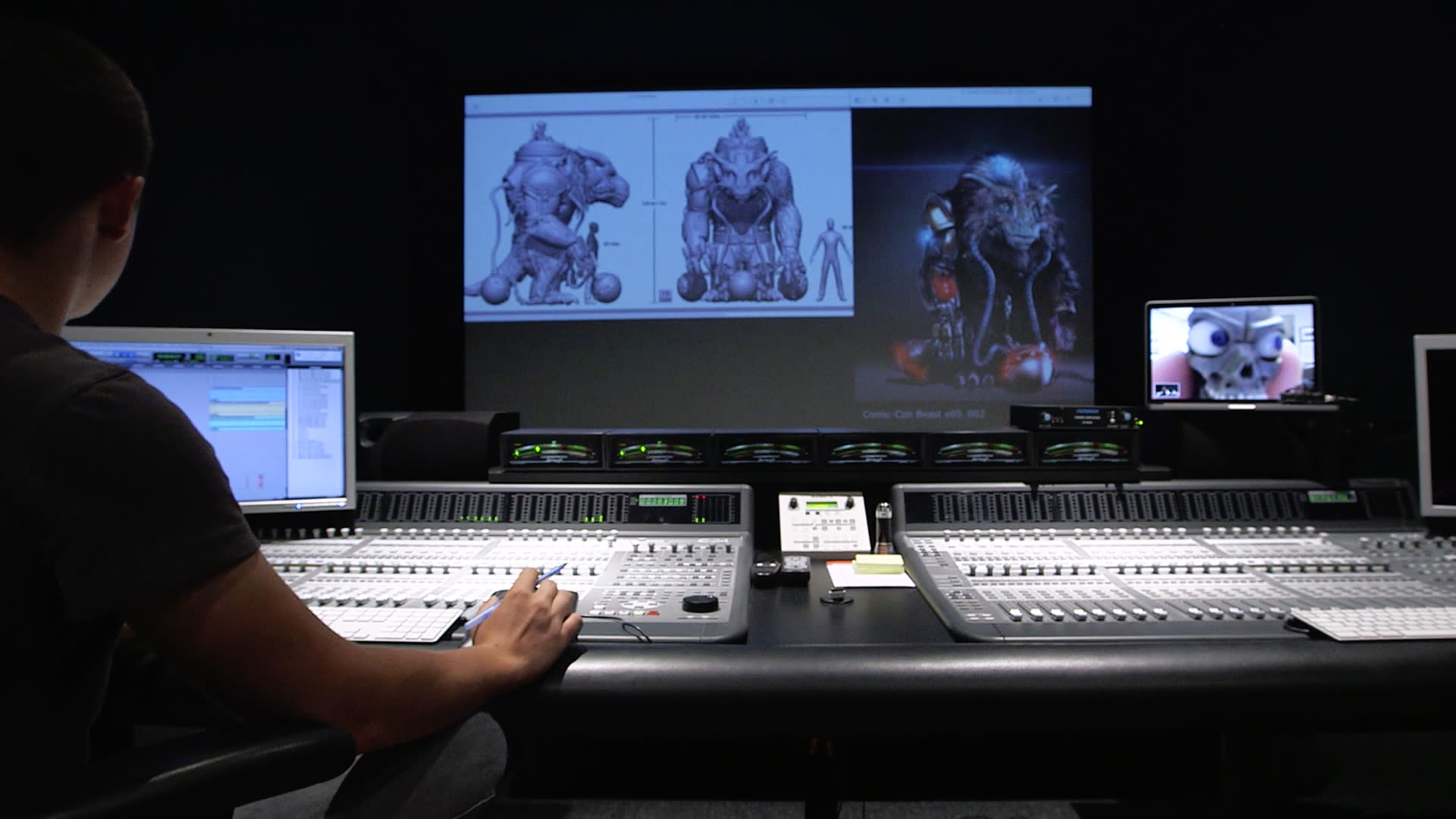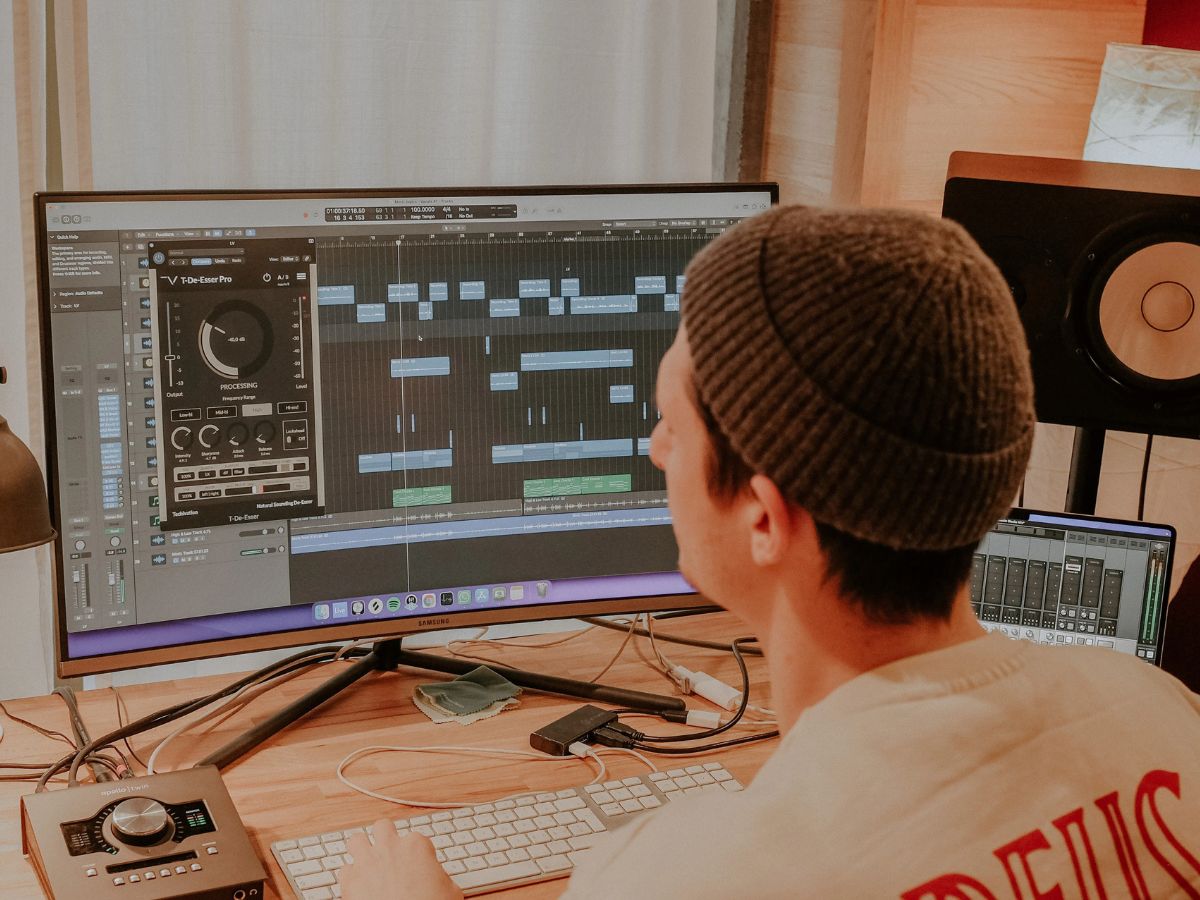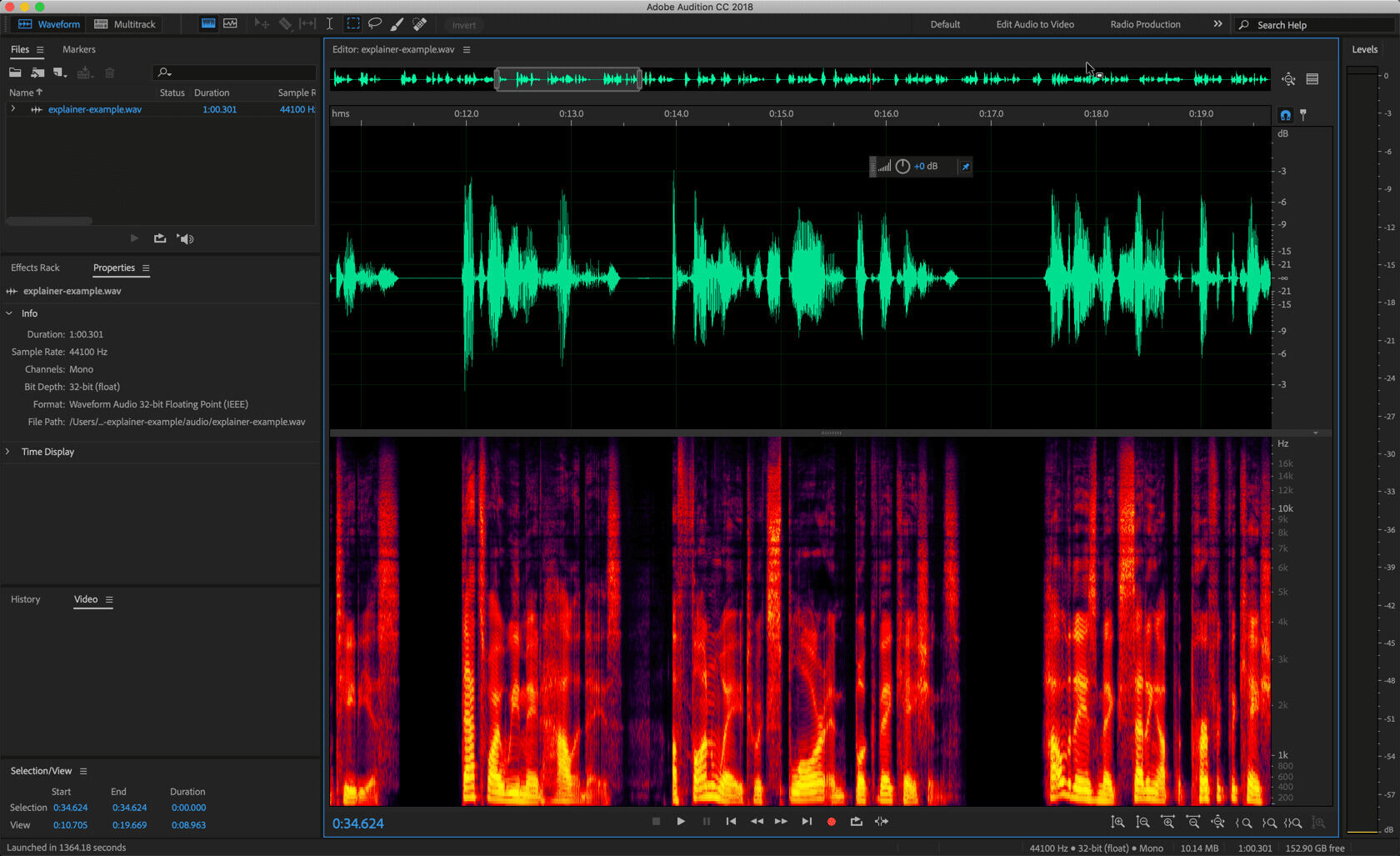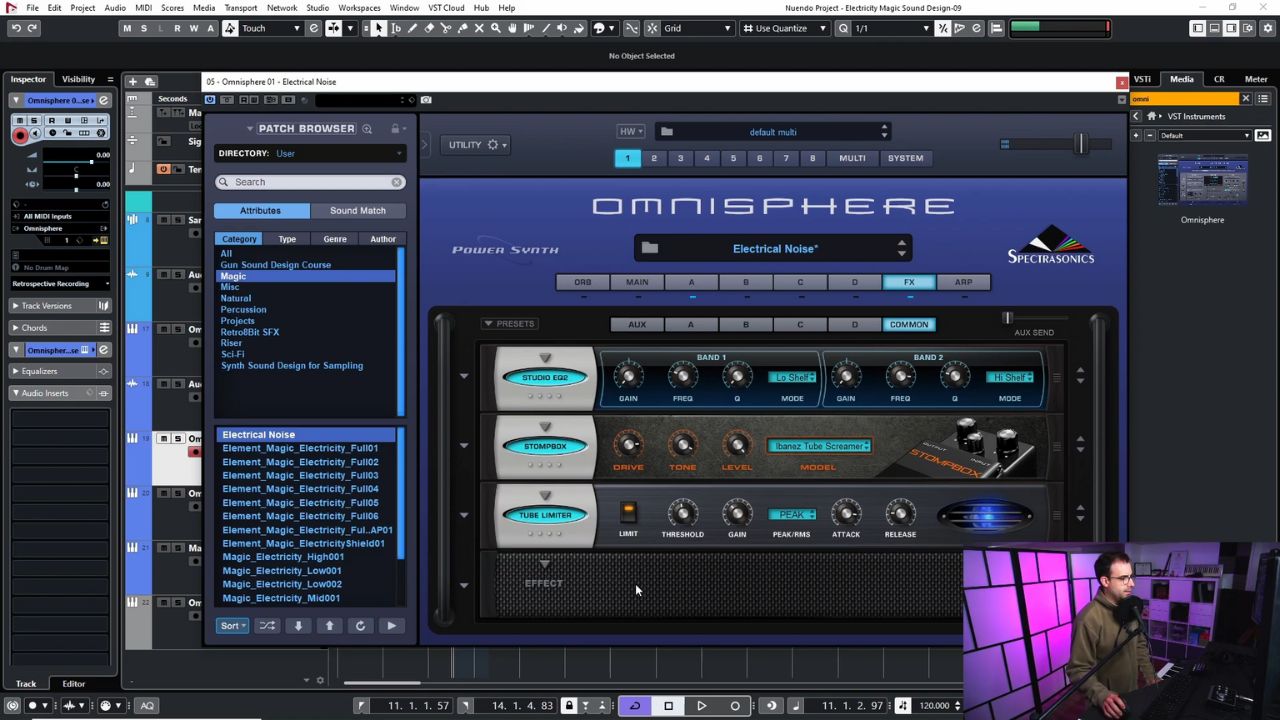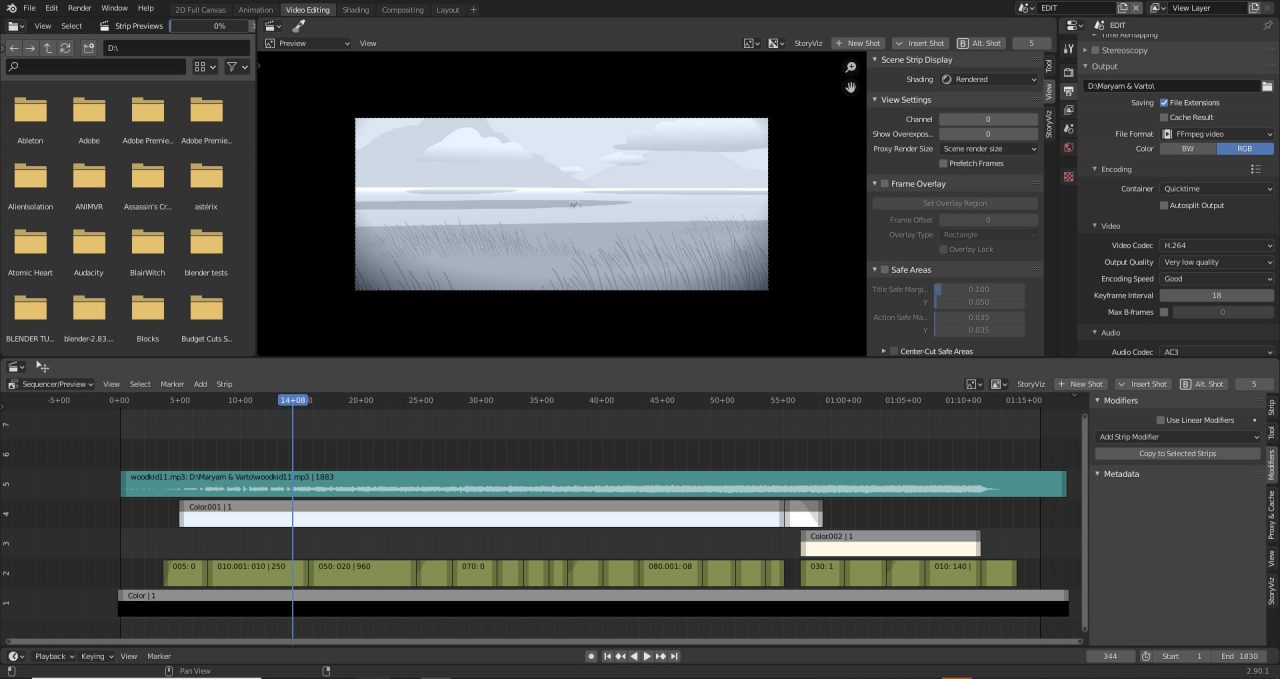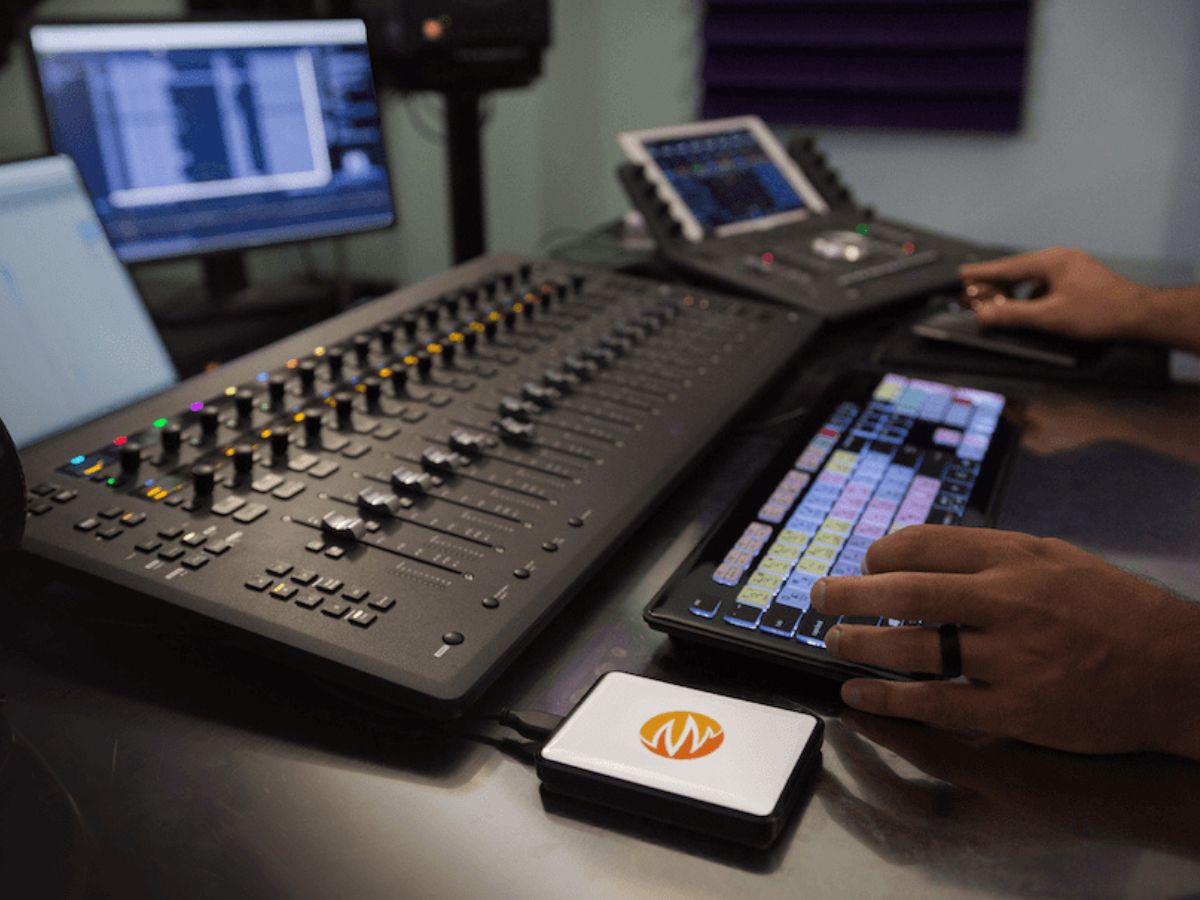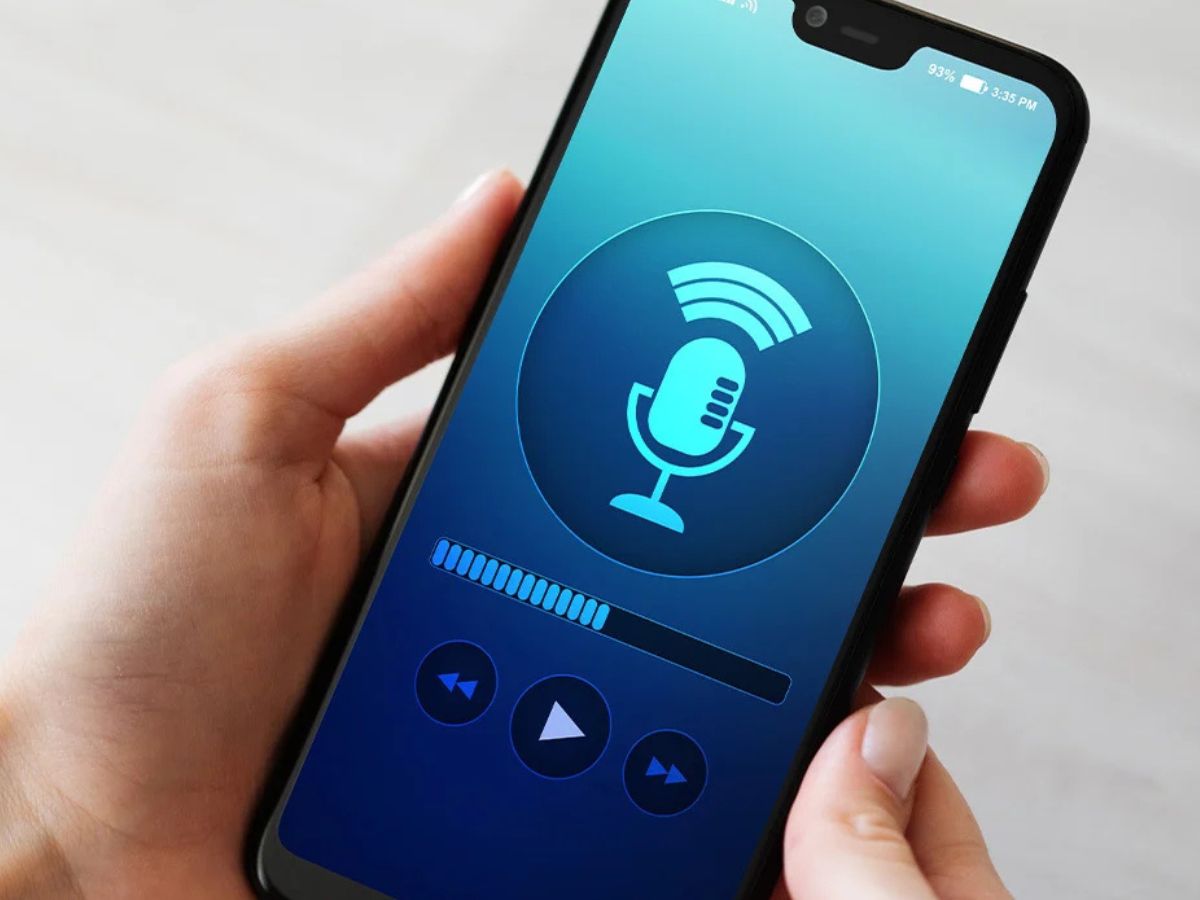Home>Production & Technology>Sound Effects>How To Record Sound Effects
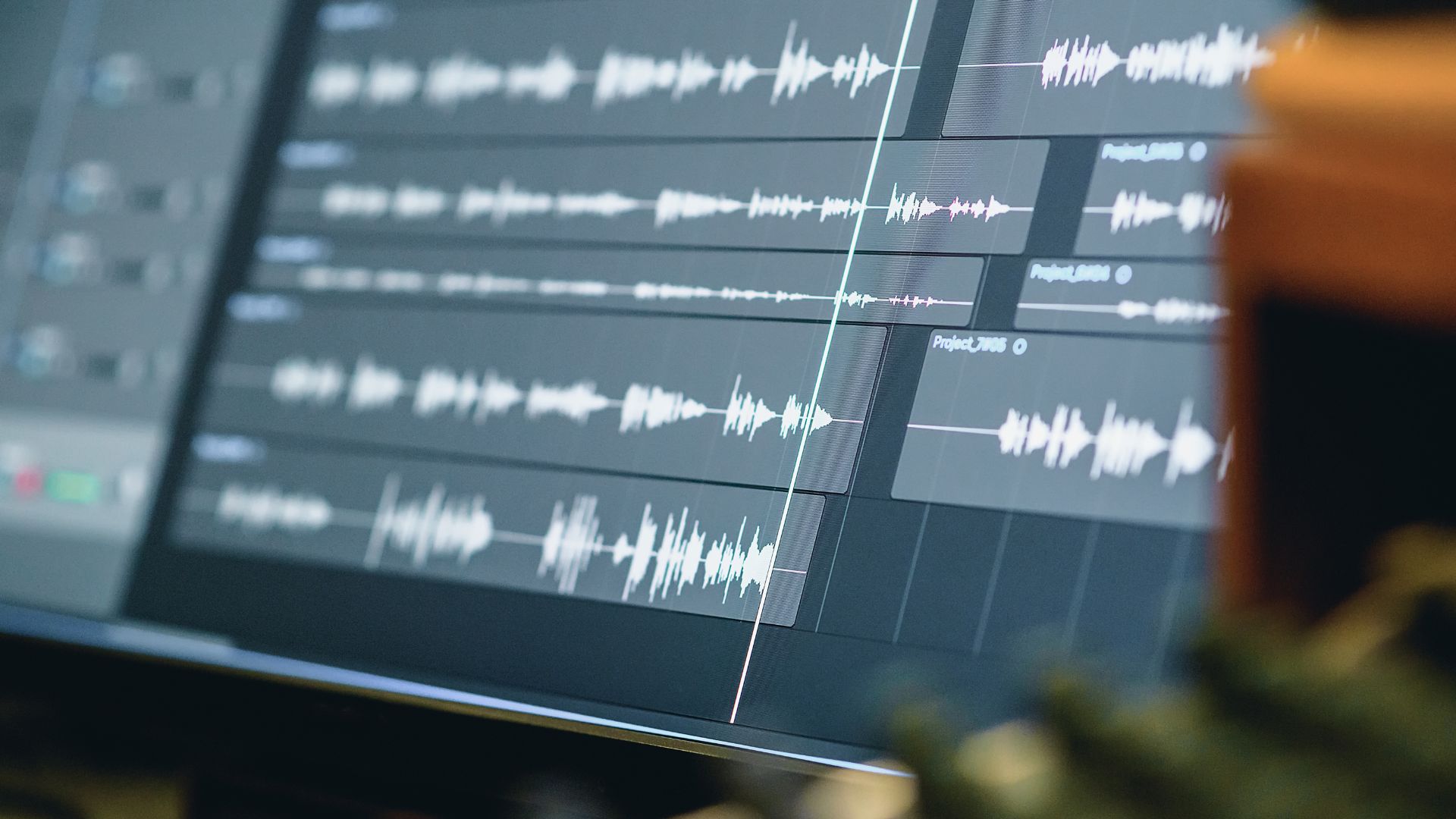

Sound Effects
How To Record Sound Effects
Published: November 9, 2023
Learn how to record high-quality sound effects with these expert tips and techniques. Capture the perfect sounds for your projects and enhance the overall audio experience.
(Many of the links in this article redirect to a specific reviewed product. Your purchase of these products through affiliate links helps to generate commission for AudioLover.com, at no extra cost. Learn more)
Table of Contents
Introduction
Sound effects play a crucial role in the world of media production, from movies and television shows to video games and podcasts. They add depth, excitement, and realism to the audio experience, creating a more immersive and engaging environment for the audience. Whether it’s the sound of thunder rumbling in the background, the footsteps of a character walking down a hallway, or the screeching tires of a car chase, sound effects help to bring scenes to life and evoke emotional responses from viewers and listeners.
Recording sound effects involves capturing real-life sounds and using them in various audio projects. It requires careful planning, the right equipment, and a keen ear for identifying unique and interesting sounds. In this article, we will explore the importance of recording sound effects and provide valuable tips on how to get started in this exciting field.
Not only are sound effects essential for creating a realistic audio experience, but they are also valuable from a storytelling perspective. They help to establish the mood and atmosphere of a scene, enhance the dramatic tension, and provide cues to the audience about what is happening on screen. Just think about a horror movie without the spine-chilling screams and creaking doors – it simply wouldn’t have the same impact.
Furthermore, sound effects have the power to transport listeners to different locations and time periods. Whether it’s the bustling streets of a city, the serene sounds of nature, or the futuristic noises of a spaceship, sound effects can evoke specific environments and enhance the overall production quality.
Sound effects can be recorded from various sources, including real-world objects and environments, as well as created digitally through synthesizers and audio editing software. However, there is a certain charm and authenticity that comes from capturing sounds directly from their source. This is why many sound designers and audio engineers go out into the field to record their own sound effects.
Recording your own sound effects not only allows you to have unique and personalized audio assets but also gives you a deeper understanding and appreciation of the process. It allows you to be creative and experiment with different techniques to achieve the desired result.
In the following sections, we will delve into the importance of recording sound effects and provide practical tips and advice on how to effectively capture and utilize them in your audio projects.
Importance of Recording Sound Effects
Sound effects are an essential element in media production, enhancing the audio experience and making it more immersive for the audience. They have a profound impact on the storytelling aspect as well as the overall production quality. Let’s explore the importance of recording sound effects in more detail:
- Enhanced Realism: Sound effects help to create a realistic environment by adding depth and dimension to the audio. They transport the listeners to different locations and time periods, making them feel like they’re actually there. Whether it’s the chirping of birds in a forest or the roaring of a crowd in a sports stadium, recorded sound effects contribute to the authenticity of the audio experience.
- Mood and Atmosphere: Sound effects play a crucial role in setting the mood and creating the desired atmosphere in a scene. They can evoke emotions, build suspense, or even evoke nostalgia. For example, the sound of rain and thunder can create a sense of tension and foreboding, while soft, melodic music can evoke a peaceful and serene ambiance.
- Enhanced Storytelling: Sound effects are powerful storytelling tools. They provide contextual clues and cues to the audience, helping them understand what is happening on screen. For instance, the sound of footsteps approaching can create tension and anticipation, while a door creaking open can suggest mystery or surprise. Sound effects contribute to the narrative and add depth to the characters and their surroundings.
- Attention to Detail: Recording sound effects allows for a greater level of detail and authenticity in the audio production. By capturing sounds from real-life objects and environments, you can add a layer of believability to your projects. Whether it’s the clinking of cutlery on a plate or the rustling of leaves in a forest, these subtle details can make a significant difference in the overall quality of the audio.
- Creativity and Originality: When you record your own sound effects, you have the opportunity to be creative and think outside the box. You can experiment with different techniques and approaches to capture unique and original sounds that cannot be found in sound libraries. This allows you to have a signature sound and adds a personal touch to your audio projects.
Recording sound effects is a skill that requires practice and a keen ear for identifying interesting sounds. By investing time and effort into capturing your own sound effects, you can elevate the quality of your audio projects and create a more immersive and engaging experience for your audience.
Equipment Needed for Recording Sound Effects
When it comes to capturing high-quality sound effects, having the right equipment is essential. Here are some of the key pieces of equipment you’ll need to get started:
- Microphones: A quality microphone is at the heart of sound effect recording. There are various types to choose from, including dynamic microphones, condenser microphones, and shotgun microphones. Each type has its own strengths and applications. It’s important to consider factors like sensitivity, directionality, and frequency response when selecting a microphone for specific sound effects.
- Portable Recorder: To capture sound effects on the go, a portable recorder is a must-have. These compact devices come with built-in microphones or allow you to connect external microphones. Look for a portable recorder that offers high-quality audio recording, adjustable settings, and a lightweight design for ease of use in different recording environments.
- Wind Protection: Wind can be a major challenge when recording sound effects outdoors. To minimize wind noise and maintain the integrity of your recordings, it’s crucial to invest in wind protection accessories like foam windscreens or furry windshields. These help to reduce unwanted noise caused by gusts of wind and ensure clean and clear recordings.
- Boom Pole: For capturing specific sounds at a distance or in hard-to-reach places, a boom pole is a useful tool. It allows you to position the microphone at different angles and heights, providing flexibility and control over your recordings. Look for a sturdy and lightweight boom pole that is easy to handle and extends to a length that suits your recordings.
- Headphones: A good pair of headphones is essential to monitor and evaluate your sound recordings in real-time. Look for headphones that provide accurate sound reproduction and have a comfortable fit for long recording sessions. Closed-back headphones are preferable as they offer better isolation from external noise.
- Field Mixer: A field mixer is not always necessary, but it can be a valuable tool for adjusting levels and monitoring audio quality on location. It allows you to connect multiple microphones, adjust individual audio levels, and provide phantom power to condenser microphones. If you plan on recording with multiple microphones or need more control over your audio, a field mixer is worth considering.
- Cables and Accessories: In addition to the main equipment, don’t forget to invest in good quality cables, microphone stands, shock mounts, and other accessories that are specific to your setup. These help to ensure stability, prevent unwanted vibrations, and maintain the integrity of your recordings.
While having high-quality equipment is important, it’s worth noting that creativity and skill play a significant role in capturing excellent sound effects. Don’t be discouraged if you don’t have the most expensive gear. With practice and a keen ear, you can achieve impressive results with even modest equipment.
Remember to familiarize yourself with your equipment, experiment with different settings, and practice proper microphone placement techniques. This will enable you to capture the best possible sound effects and unleash your creativity in the audio production process.
Choosing the Right Location for Recording
When it comes to recording sound effects, choosing the right location can significantly impact the quality and authenticity of your recordings. Here are some key factors to consider when selecting a location:
- Ambient Noise: Avoid locations with excessive ambient noise, such as busy streets, construction sites, or airports. These noises can interfere with the clarity of your recordings and make post-production editing more challenging. Look for quieter environments where you have better control over the sound being captured.
- Specific Acoustics: Consider the acoustics of the location and how it will affect the sound you want to capture. For example, if you’re looking to record reverberant sounds like echoes or footsteps in a large space, a cathedral or an empty warehouse might be ideal. On the other hand, if you want to capture tight and dry sounds, a smaller and more enclosed space would be better suited.
- Natural and Authentic Sounds: If you’re aiming for natural and authentic sound effects, try to find locations that provide the real-life context you’re looking for. For instance, if you want to capture sounds of a bustling market, it’s best to visit an actual market during its busiest hours rather than trying to recreate it in a studio. The authenticity of the environment will contribute to the realism of your sound effects.
- Accessibility and Safety: Ensure that the location is easily accessible and safe to record in. Consider factors such as permissions, legal requirements, and potential hazards. If you’re planning to record in public places, make sure to check local laws and regulations regarding audio recording. Safety should always be a top priority, so assess any potential risks before proceeding.
- Variety: It’s beneficial to have a variety of locations in your sound effects library. Different environments offer unique opportunities for capturing a wide range of sounds. For example, urban settings provide a wealth of mechanical and industrial sounds, while natural environments offer opportunities for capturing wildlife and atmospheric sounds. Explore different locations and aim to include a diverse range of soundscapes in your recordings.
- Time and Season: Consider the time of day and season when planning your sound recording sessions. Certain sounds are more prevalent or distinct during specific times of the day or year. For example, the ambiance and wildlife sounds in a forest may be different in the morning compared to the evening. Understanding the characteristics of your desired sound effects and capturing them in their optimal conditions can yield more authentic and evocative results.
Ultimately, choosing the right location for sound effect recording requires careful consideration of your desired sounds, the ambient environment, and the logistical aspects of accessibility and safety. Don’t be afraid to explore different locations, think outside the box, and experiment to discover unique and captivating sounds for your audio projects.
Tips for Recording Sound Effects
Recording sound effects can be a creative and rewarding process. To ensure successful recordings that capture the essence of the desired sounds, consider the following tips:
- Plan and Prepare: Before heading out to record, plan your session and identify the specific sounds you want to capture. Research and gather information about the location, the best time to record, and any necessary permissions or permits. Use a checklist to ensure you have all the necessary equipment and accessories.
- Listen and Observe: Train your ears to be attentive to the sounds around you. Take the time to listen and observe the environment before pressing the record button. Pay attention to the different layers of sound that make up the scene and focus on capturing the most interesting and unique elements.
- Experiment with Mic Placement: Mic placement is crucial for capturing the desired sound accurately. Move the microphone closer or farther from the sound source to achieve the desired balance and perspective. Try different angles, heights, and distances to find the sweet spot and capture the best sound quality.
- Control Background Noise: Minimize unwanted background noise as much as possible. Choose locations with minimal ambient noise and try to schedule your recording sessions during quieter hours. Use windshields or foam covers to reduce wind noise when recording outdoors. Consider using noise reduction techniques during post-production to further eliminate any unwanted noise.
- Capture Multiple Takes: Don’t settle for just one take. Experiment with different variations and capture multiple recordings of the same sound. This allows for more options during the post-production stage and gives you the flexibility to select the best version of the sound effect.
- Be Patient and Persistent: Sometimes, you may encounter challenges or unexpected factors during the recording process. Be patient and persistent. Wait for the right moment to capture the perfect sound and be willing to revisit locations if necessary. The extra effort and time spent can result in exceptional sound effects.
- Stay Safe and Respectful: When recording in public places or private property, always prioritize safety and respect the rules and regulations. Obtain necessary permissions and be mindful of the people and environment around you. Maintain a professional and courteous attitude to ensure a positive experience for everyone involved.
- Take Notes: Keep a record of your recording sessions. Take notes on the equipment used, microphone placement, environmental conditions, and any other relevant details. This information will be invaluable during post-production, allowing you to easily find and organize your sound effects.
Remember, sound effect recording requires practice and a keen ear for detail. Don’t be afraid to experiment, try new techniques, and think creatively. With time and experience, you’ll develop your unique style and capture captivating sound effects that turn ordinary scenes into extraordinary audio experiences.
Editing and Processing Sound Effects
After capturing the raw sound effects, the next step is to edit and process them to ensure they are polished and ready for use in your audio projects. Here are some tips for effective editing and processing:
- Organize Your Sound Library: Before diving into the editing process, it’s important to have a well-organized sound library. Create folders and subfolders to categorize your sound effects based on themes or types. This will make it easier to locate and access specific sound effects during the editing process.
- Trim and Clean Up: Start by trimming the sound effects to remove any unwanted noise or excess recording at the beginning or end. Use audio editing software to clean up any clicks, pops, or background noise that might have been captured during the recording process. Noise reduction tools and audio filters can help in this regard.
- Normalize and Equalize: Normalize the audio levels of your sound effects to ensure consistent volume. This will help avoid sudden volume changes when using the sound effects in your projects. Additionally, equalize the frequencies to balance and enhance the overall sound quality. Boost or reduce specific frequencies as needed to achieve the desired result.
- Layer and Mix: Sometimes, a single sound effect may not have the desired impact on its own. Consider layering multiple sound effects to create a richer and more dynamic audio experience. Experiment with different combinations and mix the sound effects together to achieve the desired result. This can add depth and texture to the final audio mix.
- Apply Effects and Processing: Experiment with various audio effects and processing techniques to enhance your sound effects. This can include adding reverb or echo to create a sense of space, applying modulation effects for a unique character, or using compression to control dynamics. Be careful not to overdo the effects; always aim for a natural and balanced sound.
- Save Multiple Versions: When editing and processing your sound effects, save different versions or variations of the processed files. This allows for flexibility when using the sound effects in different projects or for different purposes. Having multiple versions gives you more options and saves time in the long run.
- Metadata and Tagging: Add relevant metadata and tags to your sound effects to make them easily searchable and organized in your sound library. Include information such as the sound effect’s description, keywords, and any specific properties or characteristics. This will help you locate and use the sound effects efficiently in the future.
- Test and Evaluate: Lastly, test your edited and processed sound effects in the context of your audio projects. Listen to how the sound effects integrate with the other audio elements and adjust as needed. Pay attention to the overall balance and ensure that the sound effects enhance the desired mood, atmosphere, and storytelling elements.
Remember, the goal of editing and processing sound effects is to enhance their quality, make them more versatile, and ensure they seamlessly integrate into your audio projects. Take the time to refine and polish your sound effects to create a professional and immersive audio experience for your audience.
Organizing and Storing Sound Effects
As your collection of sound effects grows, it becomes crucial to have a well-organized system for storing and accessing your audio assets. Proper organization ensures that you can quickly find and use the right sound effects when needed. Here are some tips for organizing and storing your sound effects:
- Folder Structure: Create a folder structure that is logical and easy to navigate. Consider organizing your sound effects by category, such as nature, vehicles, or footsteps. Within each category, create subfolders to further classify the sound effects based on specific attributes or subcategories. For example, under the Vehicles category, you can have subfolders for cars, motorcycles, and aircraft.
- Descriptive File Naming: Make sure to use descriptive and consistent file names for your sound effects. Include relevant information such as the sound’s subject, location, and variations, if applicable. This will make it easier to search for specific sound effects and understand their contents at a glance. Consider using a standardized naming convention to maintain consistency across your sound library.
- Metadata and Tags: Assign metadata and tags to your sound effects to provide additional information about each file. This can include details like the sound’s description, keywords, duration, and file format. Metadata and tags make it easier to search for specific sound effects using keywords or filters and help in quickly identifying and selecting the appropriate files for your projects.
- Backing up Your Library: Regularly back up your sound effects library to prevent data loss and ensure the longevity of your collection. Use external hard drives, cloud storage, or other reliable backup solutions to keep duplicates of your files. Consider keeping backups in multiple locations to safeguard against any hardware failures or disasters.
- Version Control: If you make edits or modifications to your sound effects, consider implementing a version control system. This way, you can keep track of changes made to each file and easily revert back to previous versions if needed. This ensures that you have a history of your edits and can maintain the integrity of your original recordings.
- Regular Audits: Conduct regular audits of your sound effects library to ensure that it remains organized and clutter-free. Remove any duplicates, obsolete files, or low-quality recordings. This keeps your library streamlined, making it easier to navigate and locate the relevant sound effects.
- Accessible and Scalable Storage: Choose a storage solution that provides quick and easy access to your sound effects. This can be an external hard drive, network-attached storage (NAS), or cloud-based storage. Select a solution that can accommodate your growing library and allows for easy expansion in the future.
- Documentation and Cataloging: Consider creating a documentation or cataloging system to keep track of your sound effects library. This can include a spreadsheet or database that lists all the sound files, their descriptions, tags, and any relevant information. This documentation can serve as a reference when searching for specific sound effects across your library.
An organized and well-maintained sound effects library saves time and helps streamline your workflow. Implement these organizational strategies to keep your sound effects collection easy to navigate, efficient to search through, and readily accessible for all your audio projects.
Conclusion
Recording and utilizing sound effects is a vital component of creating immersive and engaging audio experiences. Sound effects enhance the realism, mood, and storytelling capabilities of various media forms, including movies, television shows, video games, and podcasts. By capturing unique and authentic sound effects, you can bring scenes to life, evoke emotions, and transport your audience to different environments.
In this article, we explored the importance of sound effect recording and provided valuable tips for getting started in this exciting field. We discussed the equipment needed, including microphones, portable recorders, and accessories, as well as the significance of choosing the right location for recording. We also covered important considerations such as ambient noise, acoustics, and the importance of authenticity.
Additionally, we discussed tips for effectively capturing and editing sound effects. These included planning and preparation, experimenting with microphone placement, minimizing background noise, and utilizing post-production techniques to enhance and polish your recordings. We also emphasized the importance of organizing and storing your sound effects, including file structure, file naming conventions, metadata, backups, and version control.
Remember, sound effect recording is a skill that develops with practice and a keen ear. It requires creativity, attention to detail, and a willingness to experiment. Whether you are capturing everyday sounds or searching for unique, specialized effects, putting in the effort to record, edit, and organize your sound effects will ultimately result in a valuable library that can greatly enhance your audio projects.
So, go out, explore different locations, and listen closely to the world around you. With the right equipment, techniques, and organization, you can capture captivating sound effects that help create unforgettable audio experiences for your audience.


